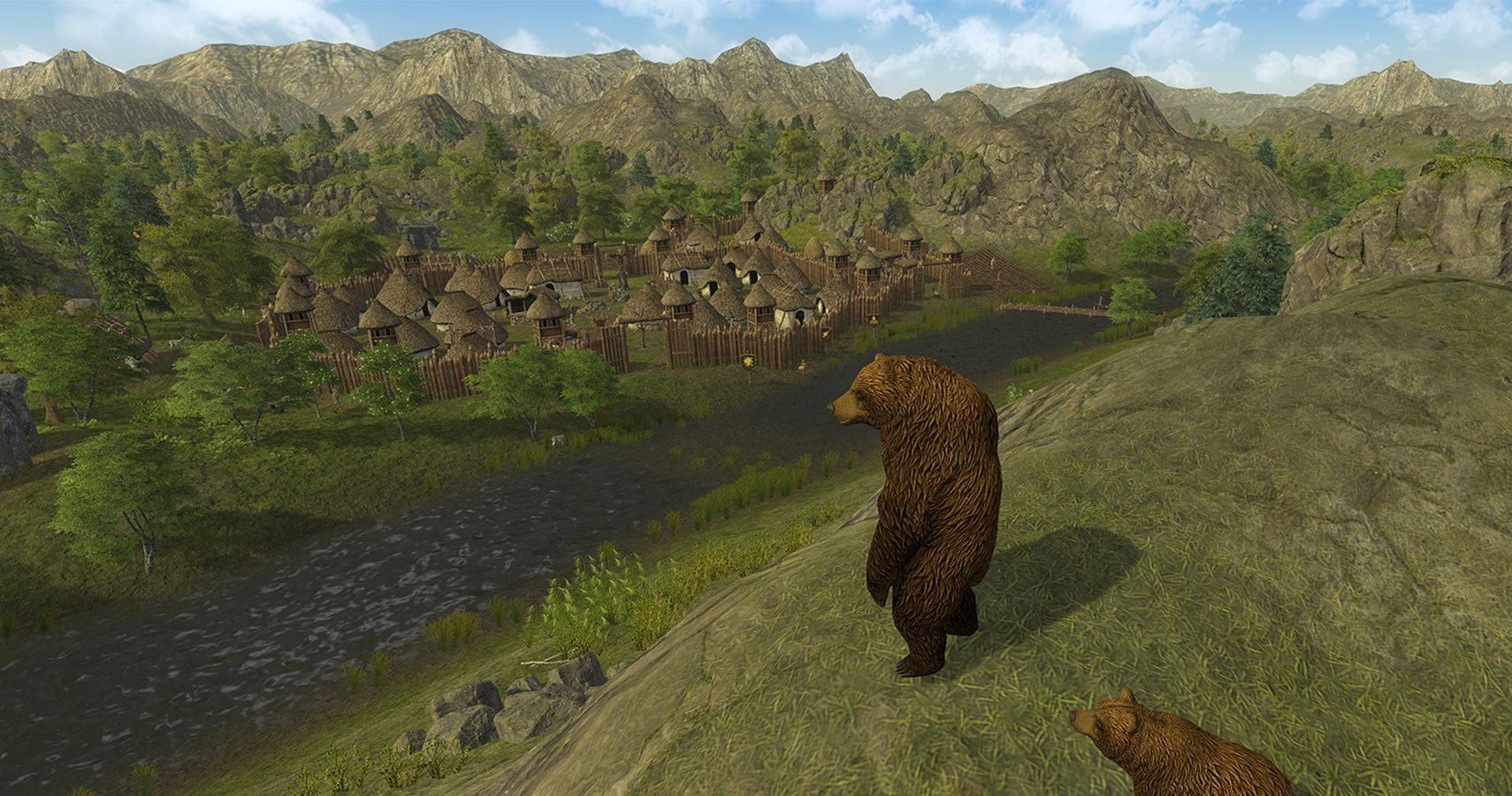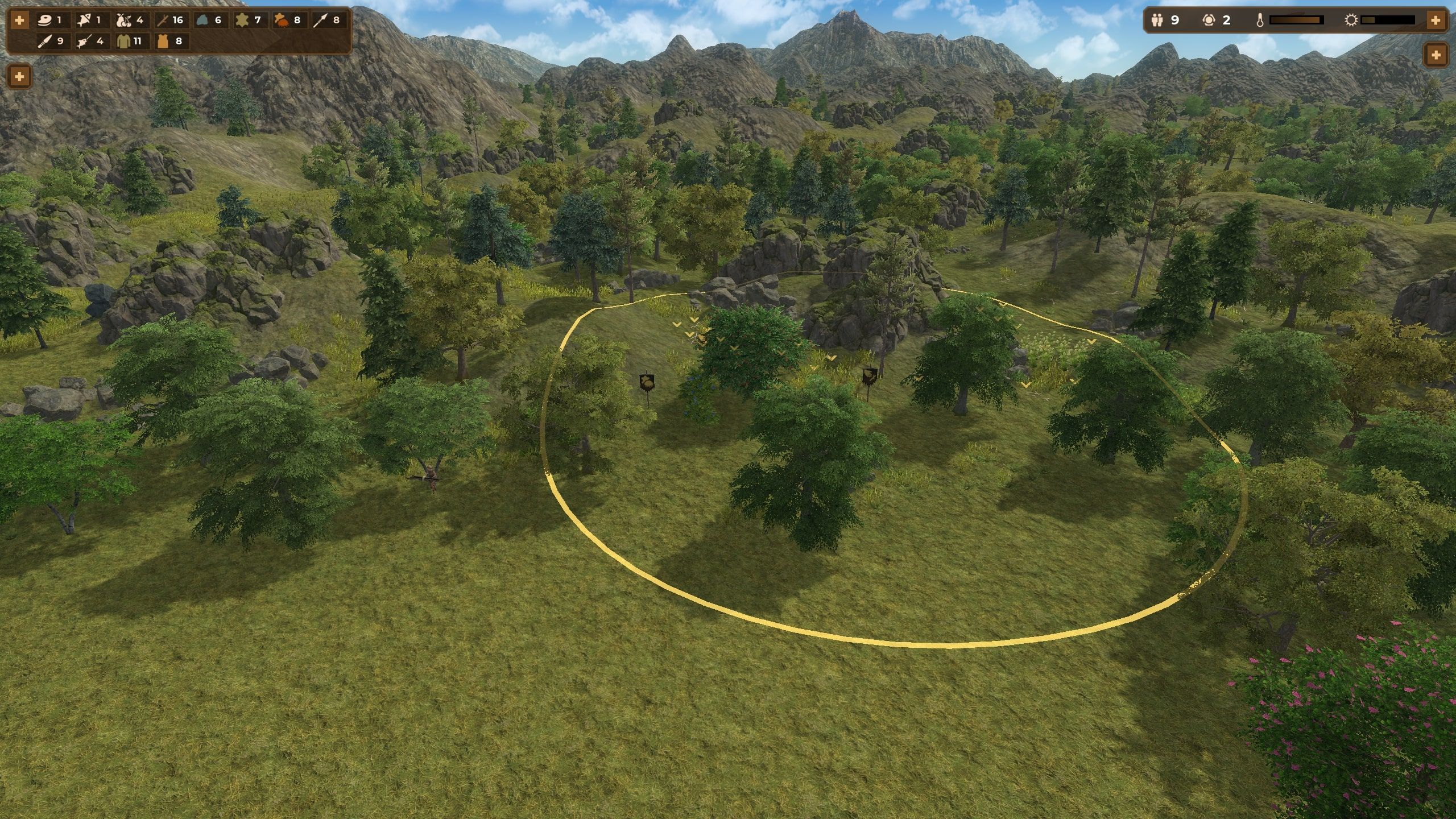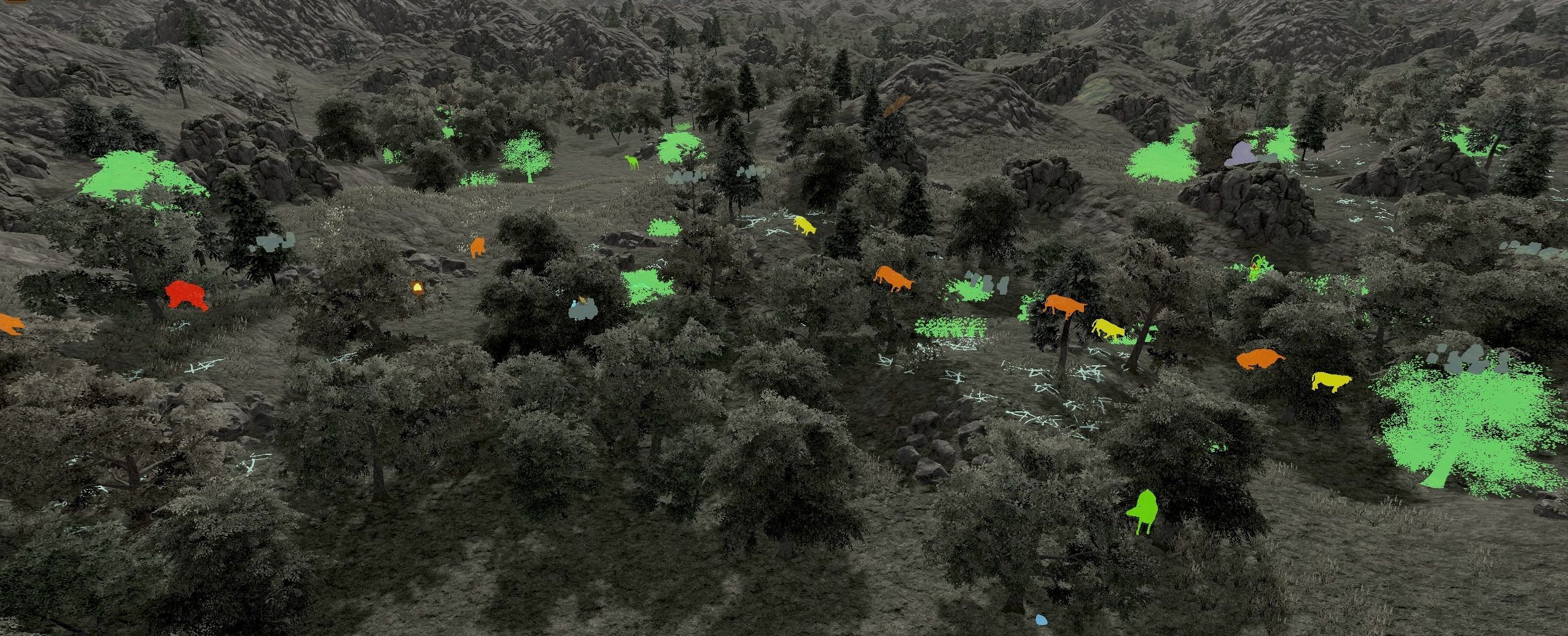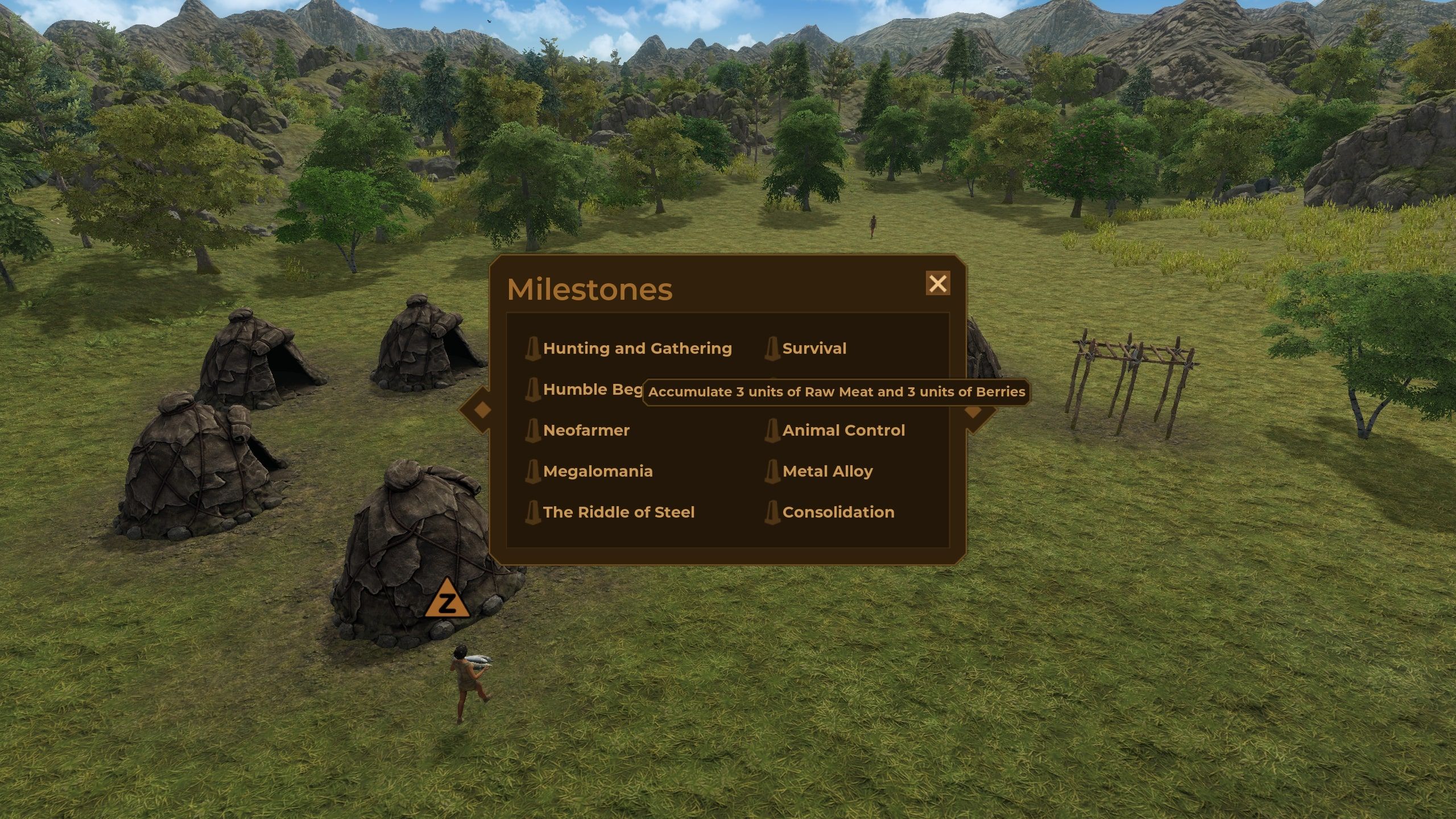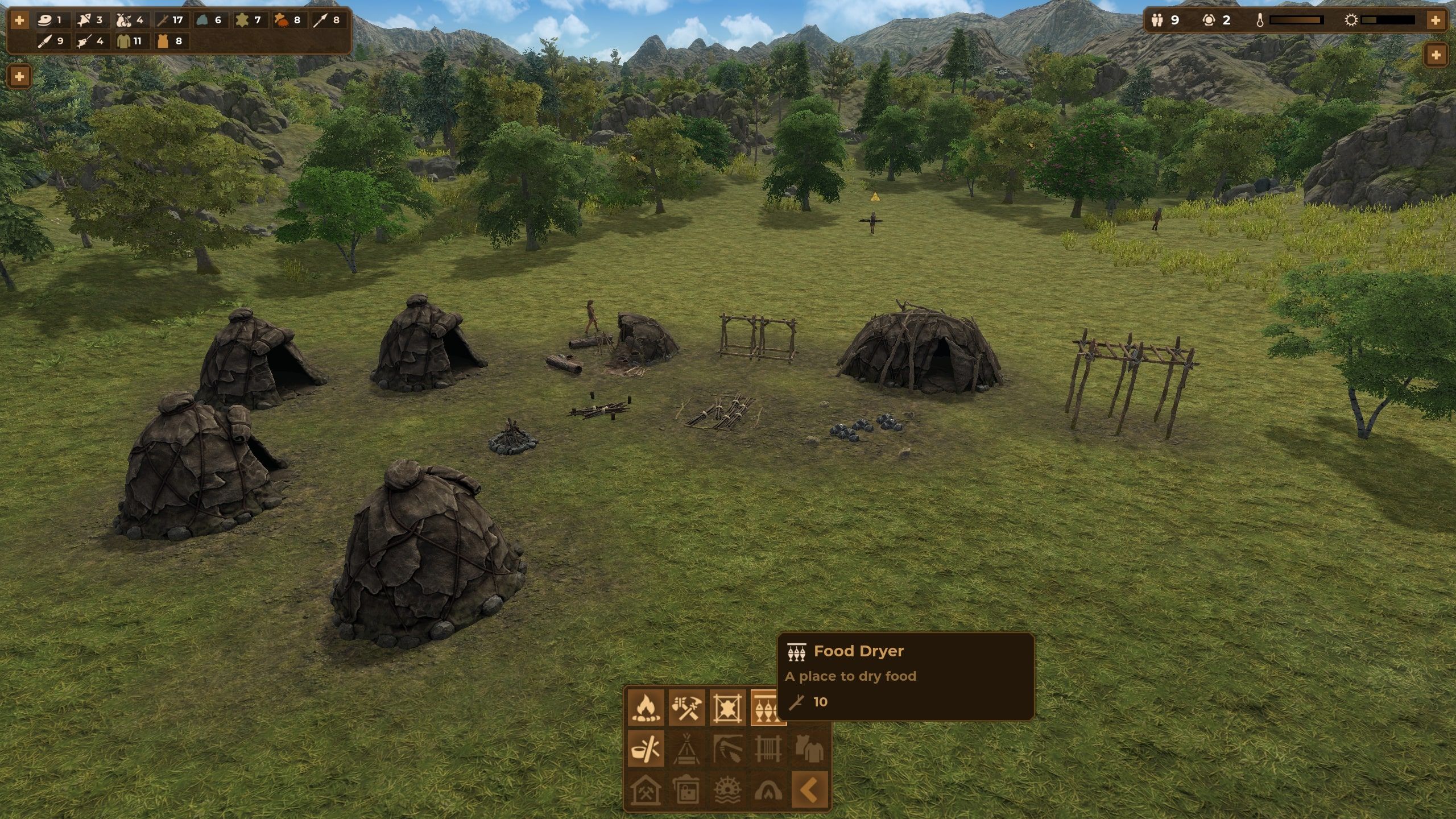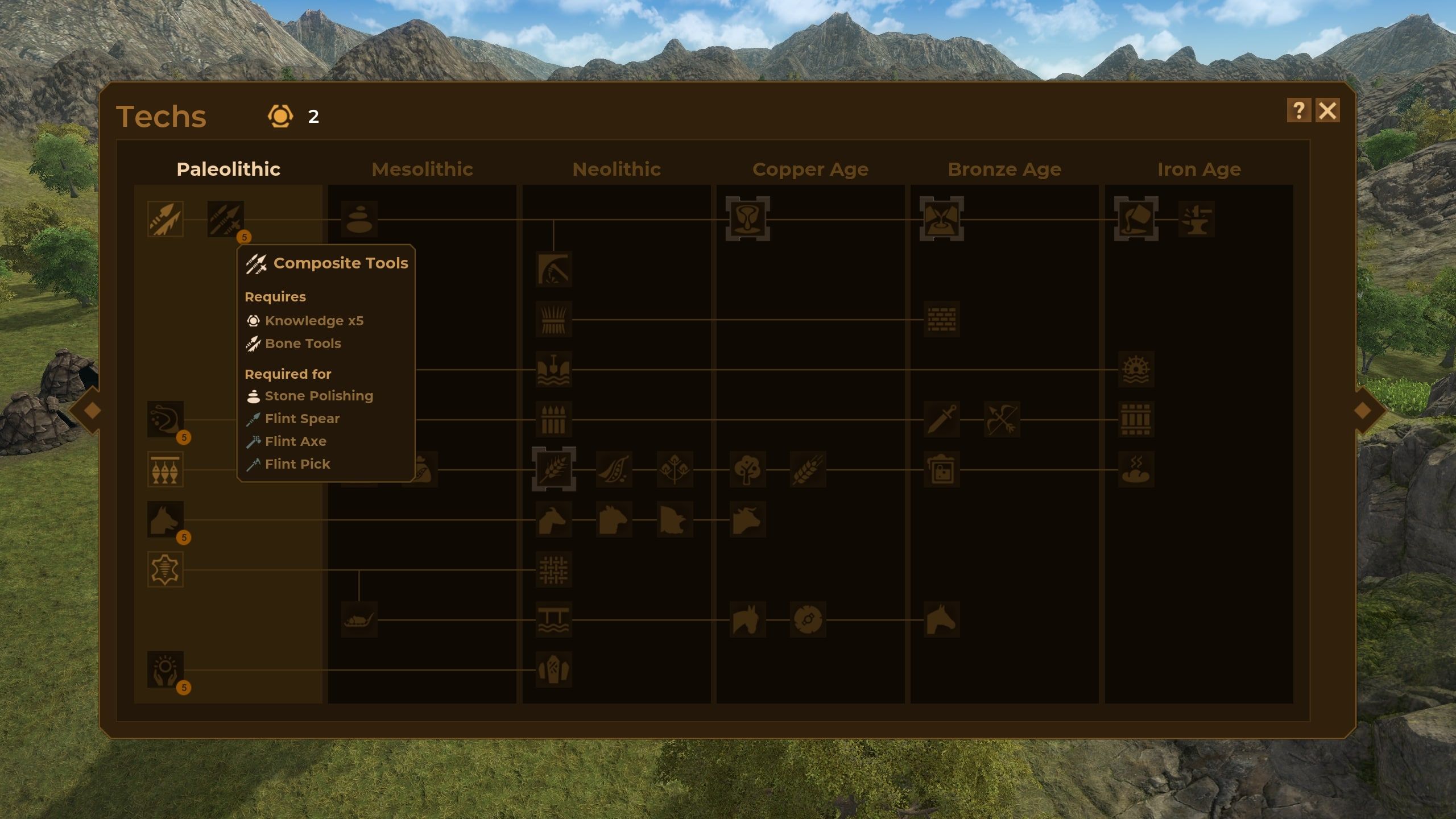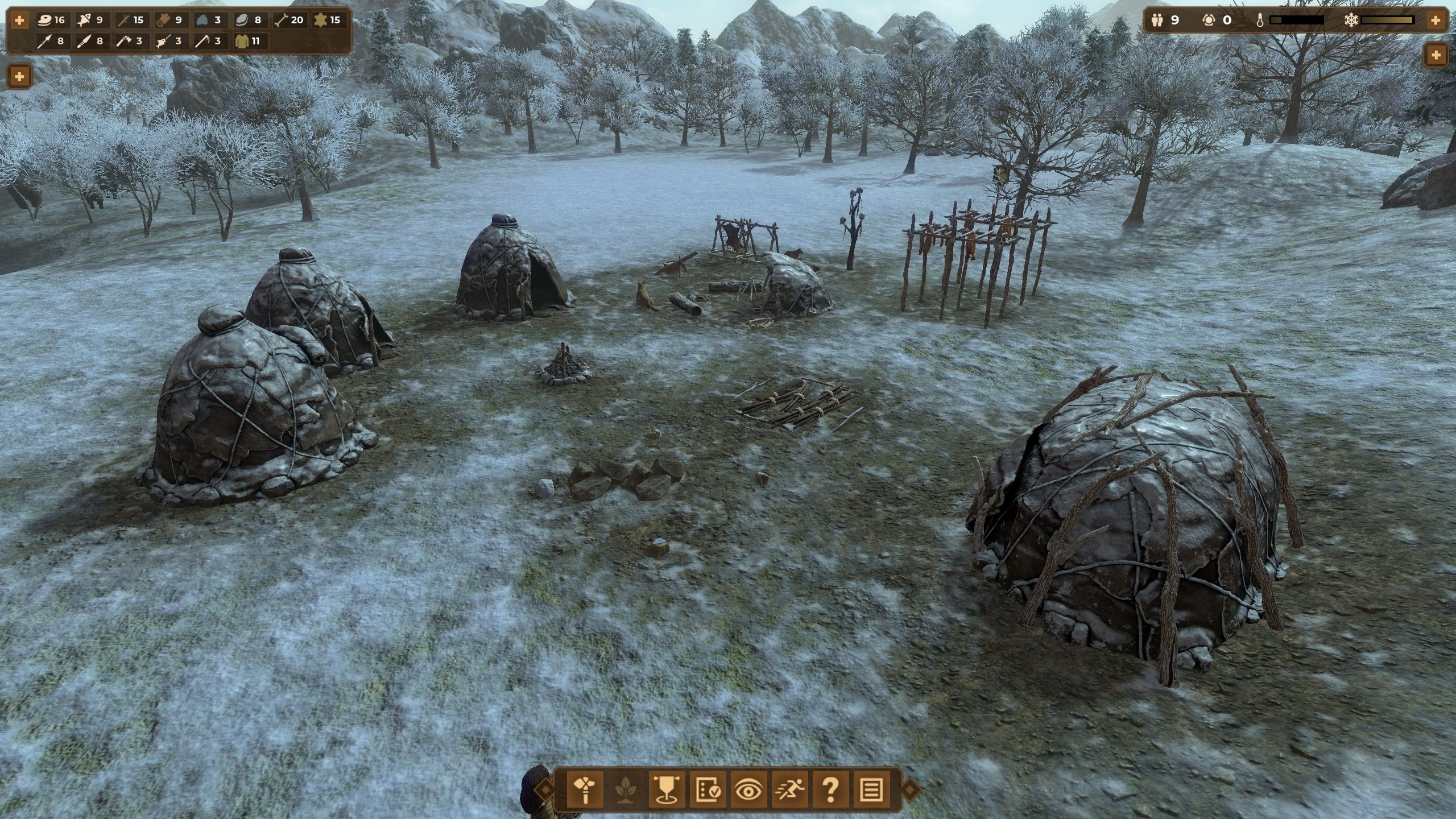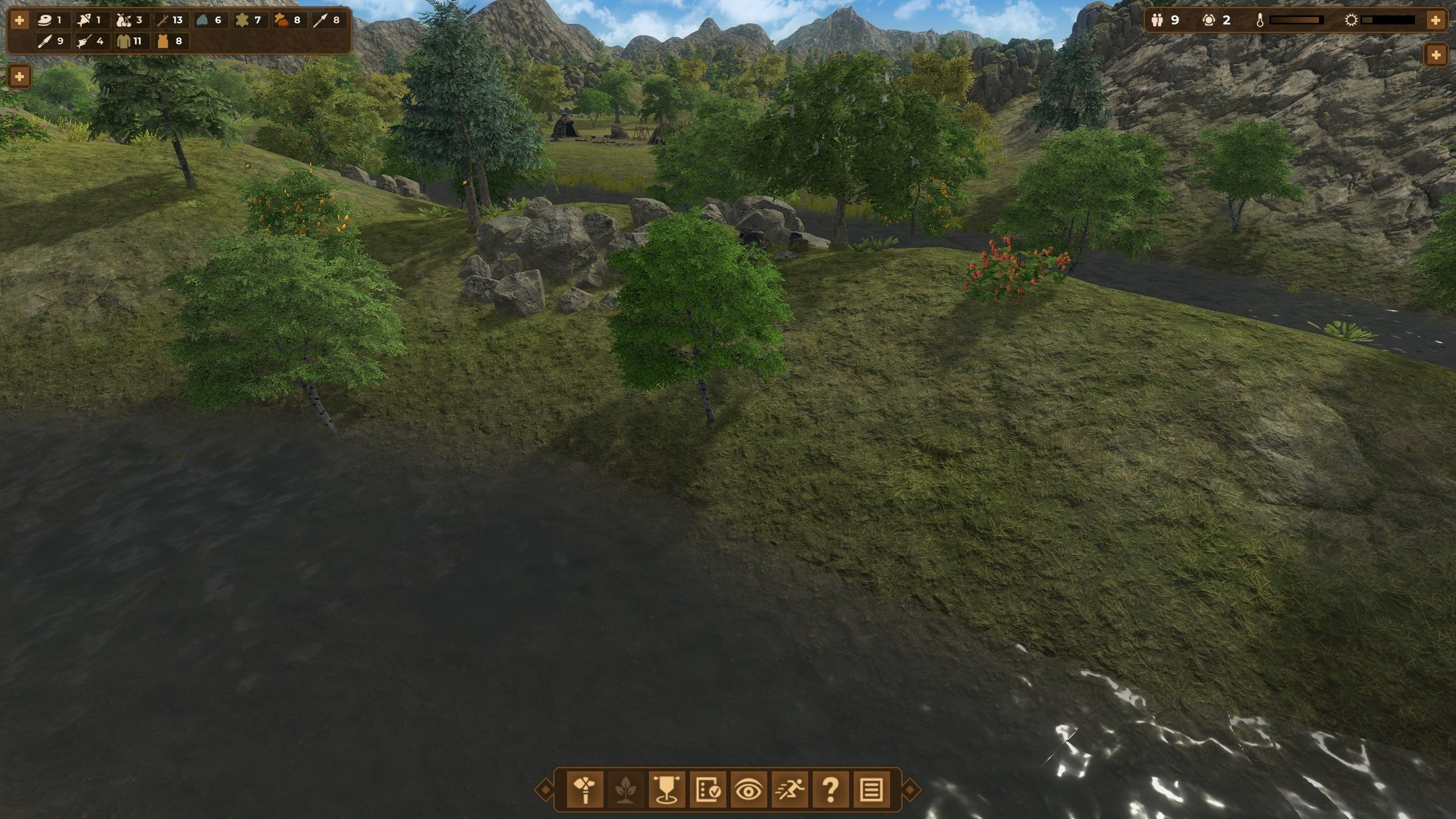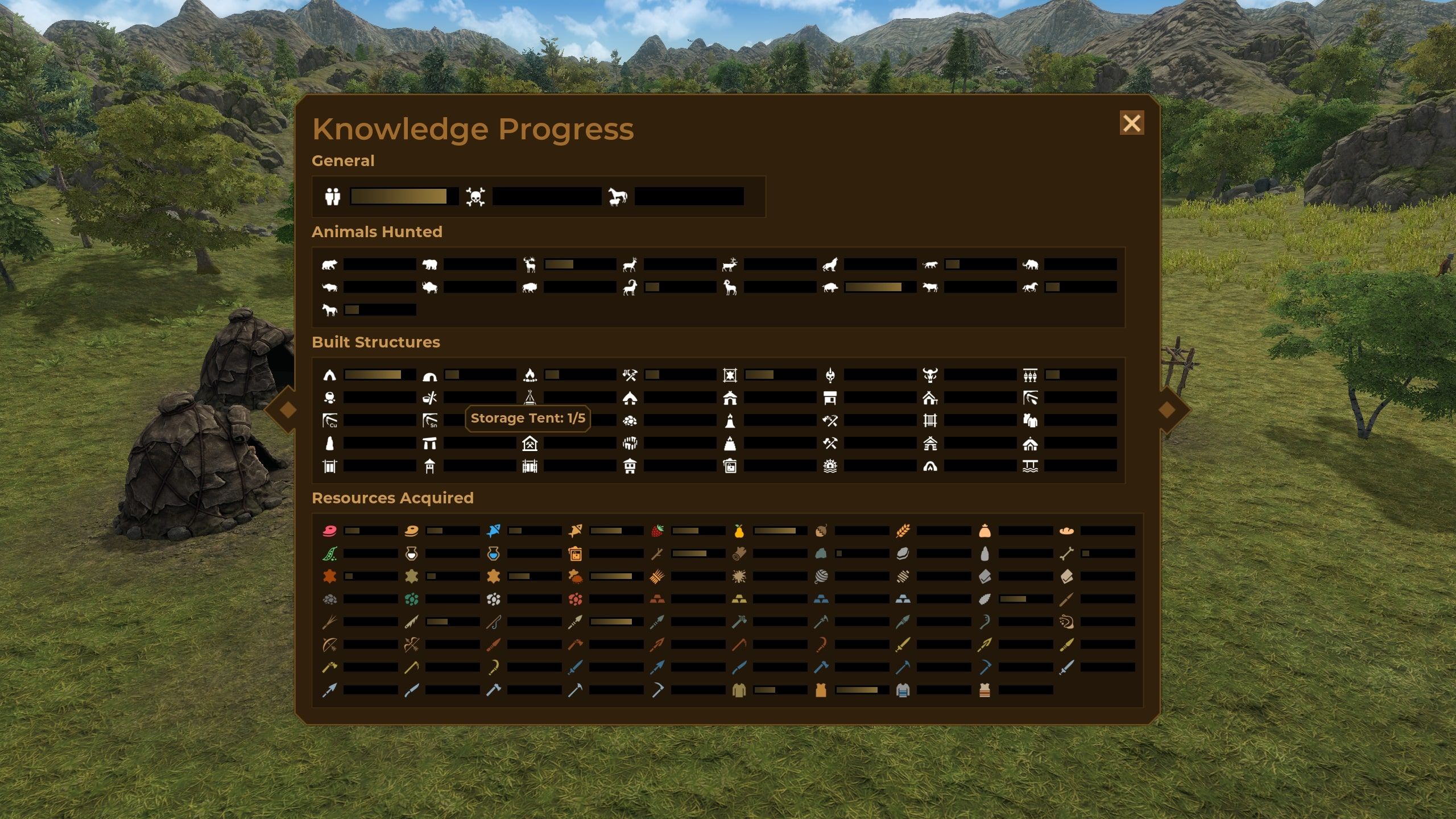Dawn of Man is a Stone Age survival game where you take control of a settlement and guide your people from the Paleolithic era, through to the Iron Age. Along the way, you must ensure their needs are met and help them to expand and evolve, without running out of resources or being defeated by the elements. Later eras will also see you expanding your defenses in order to fight off raiders.
PREVIOUSLY: Dawn Of Man Review: Slow-Paced Stone Age Survival
Early Priorities - Use Work Areas Effectively
Your first priority in Dawn of Man needs to be gathering food and basic resources. The best way to do this is to set work areas. Make sure you set a work area for gathering sticks, fishing, and obtaining flint at a minimum. These are the most important resources when you start out, alongside what you get from hunting.
Build a Rock Pile, a Wood Pile, and Storage Hut right away (unless you begin with any of these), so your villagers will have a place to drop off the resources they collect. Without storage space, they won't bother collecting resources unless there's actively something being built that uses them. It’s also a good idea to increase the storage limits for sticks especially, as they are frequently used in the early game, and you don’t want to run out. Next, build a Crafter.
Keeping Everyone Fed: Fishing, Berries, And Hunting
Berries are seasonal and don't keep well, but having your people collect and eat them in the summer will leave your longer-lasting foods for the harsh winter.
It's probably time to send out a hunting party. The best way to find a suitable target is to use the primal vision feature. Pressing tab will activate this and allow you to see all the animals highlighted on the map. In the early game, your tools are primitive so you need to look at green targets.
Primal Vision operates a traffic light system; green animals are the easiest targets, and red are the hardest. At first, it’s a good idea to click the animal to check its age and health - targeting older or lower health animals will ensure an easier victory. Tougher animals yield more resources, and in the early game, a hunting party of three or more should be able to handle an orange animal with minimal damage. Just don't do this too often, lest one of your villagers takes a lethal blow.
You can set hunting areas, but this offers less control over what your people will target, so it is a risk.
The final thing to remember at this early stage is that you will need to build at least two skin dryers. Villagers will add the skins you collect from hunting to these, allowing them to dry out and be used in building and making clothing. It’s also advisable to build a skull pole around this time, which will mitigate unhappiness. Unhappy tribespeople move slowly and do everything less effectively.
Acquiring Knowledge Points And Advancing
Once you have a steady supply of food and basic resources, you will begin to acquire knowledge points naturally. These are used to unlock new technologies for your settlement. You will also hit milestones, which unlock new game maps and ways to play.
While knowledge points accrue just through normal gameplay, you can check the Knowledge Progress screen by hitting "8." This will bring up a screen that shows how much progress you are making towards Knowledge Points. For instance, you can see that you earn one Knowledge Point for building your first Skin Dryer, and another point for building your fifth. If you want to progress quickly, it's a good idea to use the Knowledge Progress screen as a guide.
There are several technologies to choose from in this first era but I found that the best things to prioritize are Food Drying, Bone Tools, and then either Composite Tools or Tanning, in that order. If you feel like wild animals are a constant thread, Dog Domestiction may be a good second choice, as well.
Food Drying allows you to make food dryers. When these are in place, all fish and meat will be hung from them and, once prepared, will last much longer than raw meat and fish. Your people will mostly subsist on dried food in the winter.
Acquiring better tools means you’ll be able to defend your village better, as well as take down larger animals. While raiders won’t appear in these early ages, stray animals will, with some locations attracting more than others. It also helps with fishing, as bone harpoons are much better than wooden ones.
Once dried, food will last much longer.
Tanning should usually be your third priority, so you can turn some of your skins into leather. Being able to make leather clothing offers a big boost to your people’s welfare, meaning they will be happier for longer. Tannin itself is also a very valuable resource, so collecting some for trade is a worthwhile investment of labor.
Leather outfits aren't automatically better than skin outfits - everyone will need a skin outfit for the winter.
It’s worth noting that you should try to buy a log from a trader so you can build the tanner structure. If you got Composite Tools first, this won't be an issue - build a flint axe and chop down a tree!
The other early technologies are lower priorities for now. If your people are consistently unhappy, Spirituality can let you build structures that keep them happy; Dog Domestication causes friendly dogs to wander into your camp, and they help fight off raiders and wild animals; Slingmaking gives you another option for a hunting/defense tool, but is not necessary until raiders become a threat.
An efficient settlement is better than a big one.
It’s important at this stage to have a settlement which works efficiently, not necessarily a large one. While some growth will help you be able to better manage tasks, especially hunting, too much growth will leave you short of food during the winter.
Winter Survival
Avoid sending out a large hunting party just before winter. Your people will need to take shelter when the temperature hits freezing and if they are walking back to camp when it hits, there is a high chance they won’t make it back.
It’s also a good idea to set the clothing to continuous production and the limit to 125% of the population. This will ensure that, as long as you have the skins to make it, there will always be spare clothing for newcomers and babies so they are immediately protected from the elements.
Animals often hibernate, berries don’t grow and although you can fish your people will need to frequently spend time indoors. Ensure you can last the season by stockpiling dried food during the other seasons.
Management and Crafting
Work areas can run out of resources. When they do, a notification will pop up, but it can be easy to miss. Cycle through your work areas regularly, to ensure they still have resources to pull from. For fishing, you can usually swap between two locations, as the rivers refill quite quickly when not fished.
Check your crafter frequently. You should ensure that you are always crafting the best tools possible, and have continuous crafting set for your strongest tools and both light and warm clothing. This isn't just for equipping your own people - crafted tools are worth a lot to the trader, as well!
Tools will wear out so you want to ensure your people are replacing them with the best ones available. Stop crafting immediately for any outdated items, so you don’t end up with a storage tent full of useless wooden spears.
Sort your storage. Placing storage areas close to where the items will be gathered from increases efficiency.
Buildings can be recycled. This is especially important as building gives you knowledge points. Even if you don’t need multiple buildings you can build them anyway, in sets of five to gain knowledge points, then recycle the extras.
Recap
In summary, the main things to be aware of in the early game are to keep food production high, target animals wisely, and don’t expand too fast. Most of all, enjoy the journey!
Guide accurate up to Version 1.0.4
PREVIOUSLY: Dawn Of Man Goes Straight To Top Of Steam Charts At Launch

